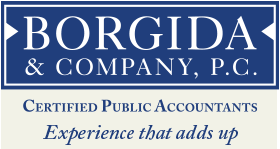 Mortgage Interest—Many taxpayers can deduct their mortgage interest on their residence. However, there is a limitation on this. The interest on a primary residence can only be deducted on up to $1,000,000 mortgage and $100,000 line of credit. Points paid to secure a mortgage when purchasing a new home are fully deductible. Points paid on a refinance must be amortized over the life of the loan.
Mortgage Interest—Many taxpayers can deduct their mortgage interest on their residence. However, there is a limitation on this. The interest on a primary residence can only be deducted on up to $1,000,000 mortgage and $100,000 line of credit. Points paid to secure a mortgage when purchasing a new home are fully deductible. Points paid on a refinance must be amortized over the life of the loan.
State Income Tax and Property Tax―State income tax and property taxes are deductible. If you are an employee, state income tax is withheld from your paycheck. Other taxpayers may need to pay quarterly estimated taxes. To get the deduction for the property tax, you need to own the property and make the tax payment.
Charitable Donations—Charitable donations include both donations of cash and property. There are different limitations depending on the type of property donated. Cash (check) donations are limited to 50% of Adjusted Gross Income ("AGI"). Appreciated property donations are limited to 30% of AGI. Appreciated property is property whose fair market value is more than the donors cost basis. This would typically include things like securities, real estate, art work, and other collectibles. If the donation of appreciated property is more than $5,000 and it is not a publicly traded security, an appraisal needs to be done and submitted with the return.
Medical Expenses—Medical expenses include payments for health insurance, medical co-pays, and other out of pocket medical expenses. These deductions are not allowed until they exceed 7.5% of AGI. It's going to be more difficult to get this deduction in the future. Beginning in 2013, medical expenses are only allowed when they exceed 10% of AGI. To lower your AGI some married couples will file their return married filing separately. Married couples need to determine if married filing separately would benefit them. Self-employed people are allowed a more liberal deduction for medical insurance as an adjustment to income if they are not eligible to participate in a subsidized medical insurance plan.
Miscellaneous Itemized Deductions—Miscellaneous Items include unreimbursed business expenses, investment fees, and tax preparation costs. These deductions are allowed only when they exceed 2% of AGI.
Taxpayers can deduct the higher of their itemized deductions or the standard deduction. For 2010, the standard deduction for married couples filing a joint return was $11,400 and for single taxpayers $5,700.
ACTION ITEM: Taxpayers should be familiar with the most common itemized deductions. This will help them get every deduction they are entitled to and reduce their taxes.
Thomas F. Scanlon, CPA, CFP®
Photo From Creative Commons



Thank you a lot for sharing this with all of us you really recognise what you’re talking about! Bookmarked.
Wonderful information, thanks to the author.
Have you ever considered adding more videos to your blog to keep the visitors entertained? I recently read through the post and it was good…thanks for sharing
Thank you for the information.
Regards for this post, I am a big fan of this website.
I see something genuinely interesting about your site so I saved to favorites.
Much appreciated for the information and share!
Nancy
Some really interesting information and well written.